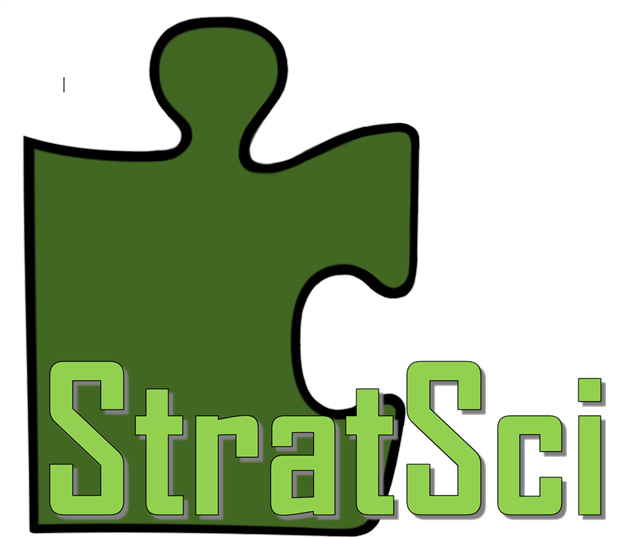Top Ten strategy Tricks — Really our ten favorite strategy concepts.
Here at strategic science we have a bag of tricks — mostly different strategic techniques used for intelligence, planning, execution and adaptation. Things like SWOT, PESTL, five forces, value chains, PERT, Gannt Logic, Mett — TC, C4ISR, The Kill Chain… etc.
Given our time available, a full analysis of even one let alone 10 methods would be so long nobody will read it.
So we’ll cover one item at a time, Abe Lincoln style (like a woman’s dress, long enough to cover up, but short enough to keep interest). But we’ll give you the full list now so you know why you’re coming back for more. And one quick warning, our favorite tricks here at strategic science tend to be unorthodox with an anti establishment interpretation.
10 — Schwerpunkt
9 — Wedge’s Instant Strategy
8 — Action is faster than reaction
7 — Instinct over Facts
6 — Ghost Tactics
5 — Rational Self Interest — The 90% Rule
4 — OODA Loop
3 — Stand Alone Complex
2 — Bad News First
1 — The Fourth Turning
Bonus tricks beyond the Ten: Complexity Theory, Deception Science, and the Macho YoYo.
Schwerpunkt
First in the top ten series
We are putting Schwerpunkt at number 10, because it’s so important it needs to be mentioned first.… Probably belongs as number 1 or 2 if ranked by importance.
“An operation without Schwerpunkt is like a man without character.”
–Field Marshal Paul von Hindenburg
Schwerpunkt is German, translates literally to “hard point” or “difficult point.” The term originates in Clausewitz’ “On War”, where Clausewitz uses it to mean strategic objective, goal or destination.
Schwerpunkt has been adapted by different translations as focus of effort or center of gravity; a somewhat different concept used in modern military doctrine; notably the vastly different interpretations of American COG and German Military Schwerpunkt. Their stuff works, but it’s much more complicated than what we need for strategy.
In strategic science as always, we go to the roots of the term — a hard point, the schwerpunkt is the unmoving target of your strategy. The one thing everyone is working toward.
In the business world, schwerpunkt is typically implemented in the form of visions and mission statements. And here I have to give Herb Rubenstien credit; he says a strategy
should always be something you can state in one sentence. That sentence is your schwerpunkt.
So what?
So a schwerpunkt is your strategic target. It could be controlling Baghdad in 72 hours (US Military in 2002), Obtaining 15 Million subscribers (Dish Network), or selling consistent quality fast food across the globe (McDonald’s). Simply communicating the schwerpunkt to everyone participating in the strategy allows them to use their own judgment in how their responsibilities align to the schwerpunkt. And it is the target used to determine priorities and relevance of efforts. If your using resources in such a way that don’t point towards your schwerpunkt, why are you using them?
Miyamoto Musashi, the legendary Japanese swordsman wrote prolifically on sword fighting; often noting if your goal is to stick the pointy end of the sword into the other man; any fancy techniques, motions, or theories that distract from that simple goal are useless.
Application
This should be obvious upon inspection — a simple sentence that establishes the destination or central goal for the organization provides just enough guidance that the leaders and individuals of the organization can fill in the gaps of the strategic plan and executive guidance that always appear in execution. Better, a well communicated schwerpunkt allows multiple leaders to independently and simultaneously adapt strategy to changing situations immediately coordinated by a common schwerpunkt — without senior leadership getting in the way.
Examples
Most common example are the contest reality shows like Iron Chef or Project Runway. The challenge is to often to create a result around a central theme (i.e. schwerpunkt). Judges frequently ask the losers why they ignored the schwerpunkt and went off on some random tangent that had little to do with the scope of the challenge.
My personal example of how a shared group schwerpunkt allows enhanced uncommunicated group coordination was simply meeting my friends for a movie. Freshman year of college, everyone scattered across the state at different colleges and jobs, bunch of disorganized 19 year old’s all agree to meet at the same theater in the city for the 5:30 pm big action movie premier they all wanted to see. Sort of a reunion. Well, this was the early 90’s before cell phones and email, so communication was a challenge.
I got stuck in friday afternoon rush hour when I hit town, and got there about 5:29 PM, about a minute before the big movie started. I was not alone. About 3 of us showed up about that time. There was no way we would get a seat, odds are the new movie would be sold out right?
Well, it didn’t matter. Because we had solid commitments, a firm roster, and group trust; one guy patiently was waiting outside the theater with 3 extra tickets in his hand, and the rest of the group had bought extra sodas and were saving seats inside. All that coordination simply thanks to saying yes to a friend on a 20 second phone call a few days earlier. The Schwerpunkt was to get the gang back together to see a ceratin movie at a certain time; and everyone indepedently corrdinated efforts and picked up each other’s slack to make it happen smoothly despite a lack of communication.
Beyond the question
Simply put, having a schwerpunkt is not enough. It has to be clearly communicated, and used as the priority and central value in decision making. Just like every other wasted strategic plan, it only works if you actually use it and act on it.
See you next week,
Thanks for reading, your humble strategist,
Ted S Galpin

Leave a Reply